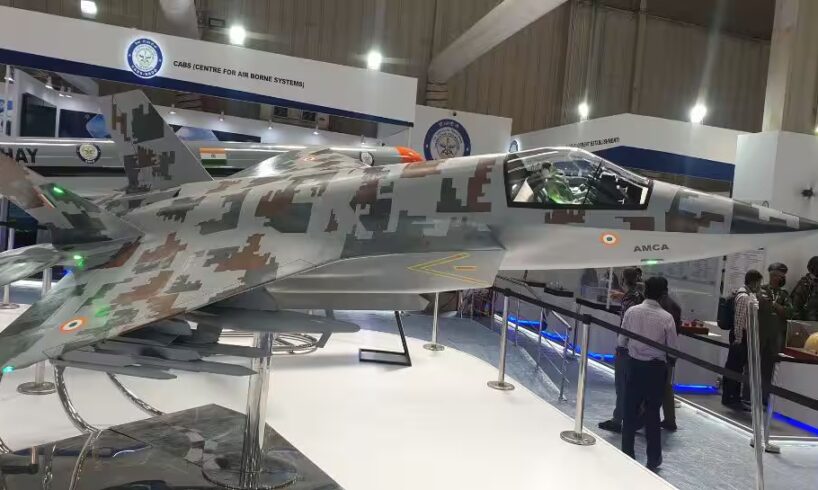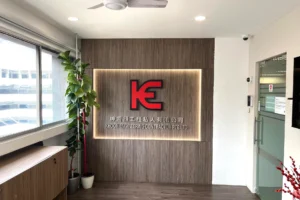
Mumbai: India’s most ambitious defence dream is taking shape. A fifth-generation stealth fighter aircraft is finally being built to rival the world’s most advanced warplanes. So far, only three other nations have achieved this milestone. The United States operates the F-22 Raptor and F-35 Lightning II, China has the Chengdu J-20 and Russia fields the Sukhoi Su-57. India’s Advanced Medium Combat Aircraft (AMCA) will soon join this elite club.
A Larsen & Toubro-Bharat Electronics Limited (L&T-BEL) consortium, which is leading the AMCA project, has joined hands with Dynamatic Technologies Limited (DTL) as its exclusive partner for the advanced combat aircraft programme.
The tie-up is a step in India’s journey to design and manufacture a stealth-capable, supersonic fighter aircraft with complete homegrown technology. The move signals that India’s private sector is now being involved in the aerospace revolution once dominated by government-run firms.
Add Zee News as a Preferred Source
Officials involved in the project said the partnership will merge DTL’s three-decade expertise in aerostructures and sub-systems with L&T’s renowned engineering and BEL’s mastery in advanced electronics. Together, the trio will form a unified industrial force aimed at creating a fighter platform that can rival the world’s best.
Arun Ramchandani, senior vice president and head of the L&T Precision Engineering & Systems, said, “Adding Dynamatic Technologies as an exclusive partner to this consortium brings unmatched agility and precision to our mission. This partnership is as much about building a next-gen fighter jet as it is about redefining the Indian Aerospace industrial ecosystem.”
Echoing that sentiment, DTL CEO and MD Udayant Malhoutra said, “We have been at the forefront of building supersonic aircraft structures for the past three decades. Our pioneering legacy, combined with advanced engineering expertise of Larsen & Toubro, brings together a unique partnership with the capabilities required to deliver India’s fifth-generation fighter aircraft.”
For India’s defence industry, the development is being seen as a defining moment. When completed, the AMCA programme will position India among a select group of nations capable of producing fifth-generation fighters.
Analysts describe this alliance as a symbol of India’s changing approach to defence production, one that relies on collaboration, speed and private innovation. The L&T-BEL-DLT partnership could also open the door for new aerospace exports in the coming years, as global demand rises for stealth and multirole combat aircraft.
Meanwhile, Indian drone makers are also making some progress. Reports suggest that platforms such as the V-BAT VTOL drone are now being manufactured domestically for global customers, even without direct orders from Indian forces.
Observers say such efforts show how Indian firms are building capability and credibility in advanced defence technologies, step by step.
As the AMCA project gathers momentum, the addition of the DTL signals more than a new industrial deal. It represents India’s determination to soar higher in the skies of global aerospace power.
What Exactly Is The AMCA?
The AMCA will be a single-seat and twin-engine stealth jet designed for maximum agility and low observability. It will carry its primary weapons inside internal bays like the American F-22 and F-35 or the Russian Su-57, which helps it stay invisible to radar. The aircraft will have an operational ceiling of about 55,000 feet. It will be able to carry up to 1,500 kilograms of weapons internally and another 5,500 kilograms on external pylons if stealth is not required. Its total fuel capacity will be close to 6,500 kilograms, ensuring long-range strike power.
Defence scientists working on the programme have said there will be two versions of the AMCA. The first will use the US-made GE F414 engine. The second, expected later this decade, will be powered by a fully indigenous engine that could deliver even greater thrust.
The AMCA is designed to be a supermanoeuvrable multirole fighter, which is capable of dominating the skies and striking deep inside enemy territory. Supermanoeuvrability refers to the aircraft’s ability to perform complex aerial movements (sudden turns, vertical climbs and steep dives) that ordinary fighters cannot execute using traditional control surfaces like ailerons or rudders.
Stealth, on the other hand, makes the jet extremely difficult to detect on enemy radar, giving the pilot the ability to strike first and disappear before being tracked. Being a multirole platform means it can handle air-to-air combat, precision strikes and suppression of enemy air defences, all within a single mission.
What Makes A Fighter ‘Fifth-Generation’?
There is no universal definition of a fifth-generation jet, but they share certain important traits such as extreme stealth, high manoeuvrability, advanced radar-evading design and smart battlefield integration. These jets carry powerful onboard computers that feed real-time information about the entire battle zone to the pilot.
Such aircraft have next-level avionics that allow them to share encrypted data instantly with friendly units. They are built around a concept called C3 (control, command and communications), which means the pilot not only flies a fighter but also leads a networked combat system.
They often feature low-probability-of-intercept radar, which can locate and track targets while keeping the aircraft hidden. Their superlight airframes can endure high G-forces during combat manoeuvres, allowing them to stay agile even in sustained supersonic flight.
The AMCA meets all these benchmarks. Engineers say it will also have an “electronic pilot” powered by artificial intelligence to assist in combat decision-making. Another feature is the Integrated Vehicle Health Management System, which monitors the jet’s internal systems in real time and predicts maintenance needs before faults occur.
How Does India’s Jet Compare?
Globally, fifth-generation fighters include the US F-22 and F-35, Russia’s Su-57 and China’s J-20. Known as the “Raptor”, the F-22 remains one of the most lethal fighters ever built. It combines stealth, high speed and extreme agility, traits that make it nearly unbeatable in close combat.
The F-22’s development almost ended before it began. In 2008, the Barack Obama administration considered cancelling it, believing large-scale wars were unlikely in the future. But the rise of Russia’s S-400 air defence system and China’s rapid military expansion changed that view. The Raptor was soon back in full production.
Russia, meanwhile, developed the Sukhoi Su-57 and has offered to partner with India in future variants.
China’s J-20, often called the “Mighty Dragon”, remains shrouded in mystery. Analysts believe it is being produced in significant numbers, but Beijing has never disclosed the exact count.
Reports suggest China is already testing two possible sixth-generation prototypes, the tailless and tri-engine J-36 seen over Chengdu in late 2024 and the J-50 with V-shaped wings and twin engines. Aviation experts say these moves are meant to match the US Air Force’s next project, the Boeing F-47, which is expected to redefine future air superiority.
Why India’s AMCA Matters Now
The AMCA reflects India’s growing urgency to modernise its military. After tense standoffs with both Pakistan and China, the focus has shifted to building an air force capable of independent deterrence.
In April, India signed a Rs 63,000 crore deal with France to acquire 26 Rafale-M jets, the naval version of the Rafale fighter. They will replace the aging MiG-29K fleet by 2031. The Indian Air Force already operates 36 Rafale-C fighters, which played a crucial role in strengthening India’s strike capability.
India has also expanded its defence industry by commissioning its own aircraft carrier, new-generation submarines, warships and even testing hypersonic missiles that can travel several times faster than sound.
Defence Minister Rajnath Singh has set a goal to award at least $100 billion in domestic defence contracts by 2033. The plan is not just about modernising India’s military but also about creating a self-reliant defence ecosystem that boosts exports and generates thousands of high-skilled jobs.
With its estimated cost of Rs 15,000 crore, the AMCA programme is a symbol of that ambition. It signals that India no longer wishes to remain a buyer of advanced weaponry but aims to become a maker, one that can challenge even the most established air powers.





